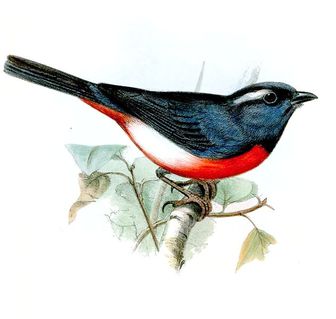Gray-throated Chat
Its natural habitat is subtropical or tropical dry forests.

The Gray-throated Chat is classified as Least Concern. Does not qualify for a more at risk category. Widespread and abundant taxa are included in this category.
male Gray-throated Chat participating in an army-ant-following flock of Red-throated Ant-Tanagers and a Ruddy Woodcreeper (the chat was not shy at all; within two meters at one point); two pairs of Rose-throated Tanagers; White-browed Wren; several Yucatan Flycatchers; one Yucatan Woodpecker; lots of Blue Buntings (in the weedy fields toward the beginning of the road); and several Yucatan Vireos. We also saw our first mammal of the trip, a gray fox darting across the road. More
Gray-throated Chats proved to be curiously common here, as we saw as many as ten throughout the day. Finally, we headed east into the Usumacinta marshes, which were loaded with birds. The fields were full of white and pink, as we drove by flocks of egrets, stilts, spoonbills, storks, and ibis numbering into the hundreds and even thousands. A quick scan at a mudflat turned up dowitchers, yellowlegs, and most notably, over a thousand Stilt Sandpipers. More
Gray-throated Chat (Granatellus sallaei) by Don Jones. More
Family : Parulidae
Genus : Granatellus
Species : sallaei
Authority : Bonaparte, 1856

